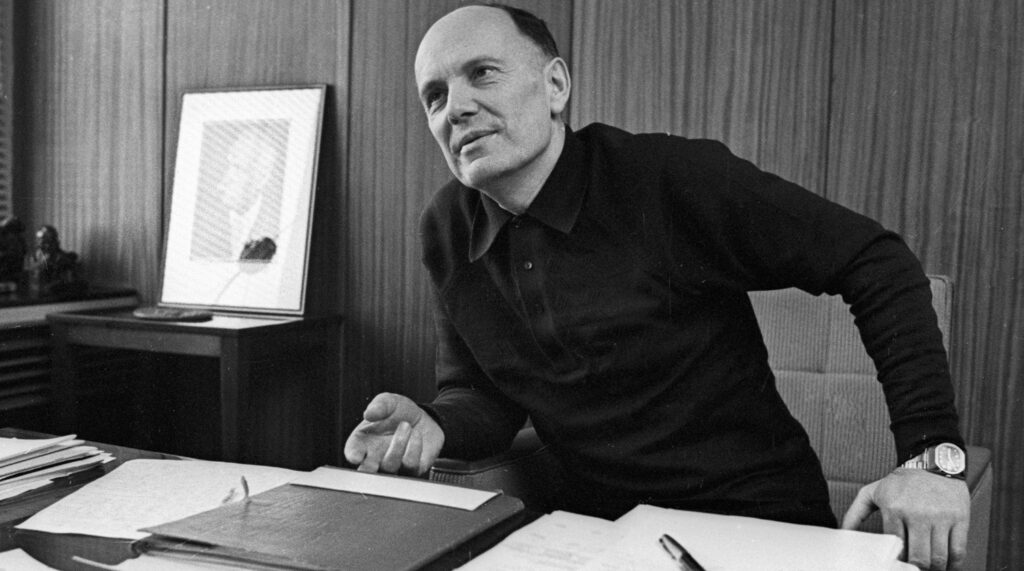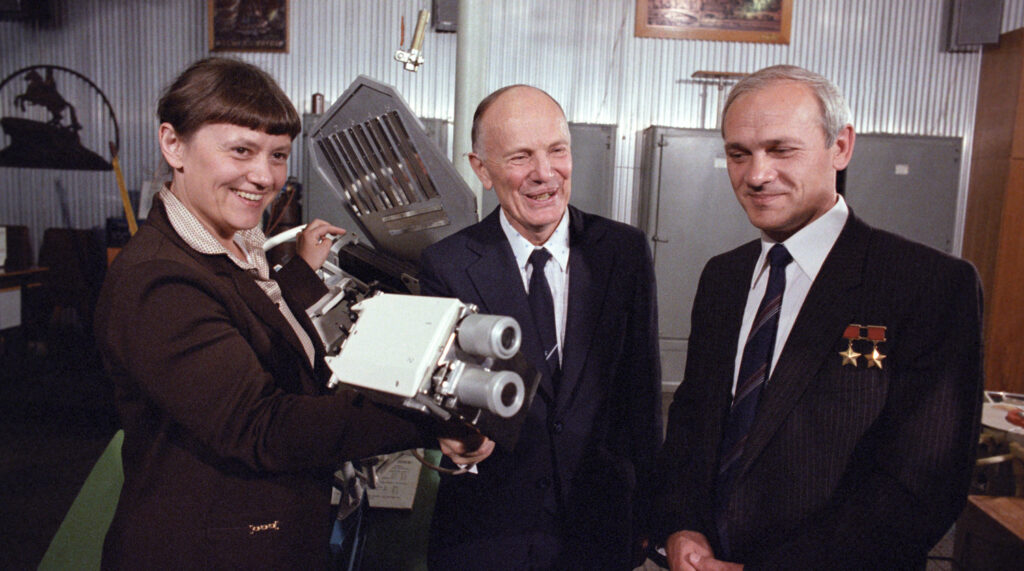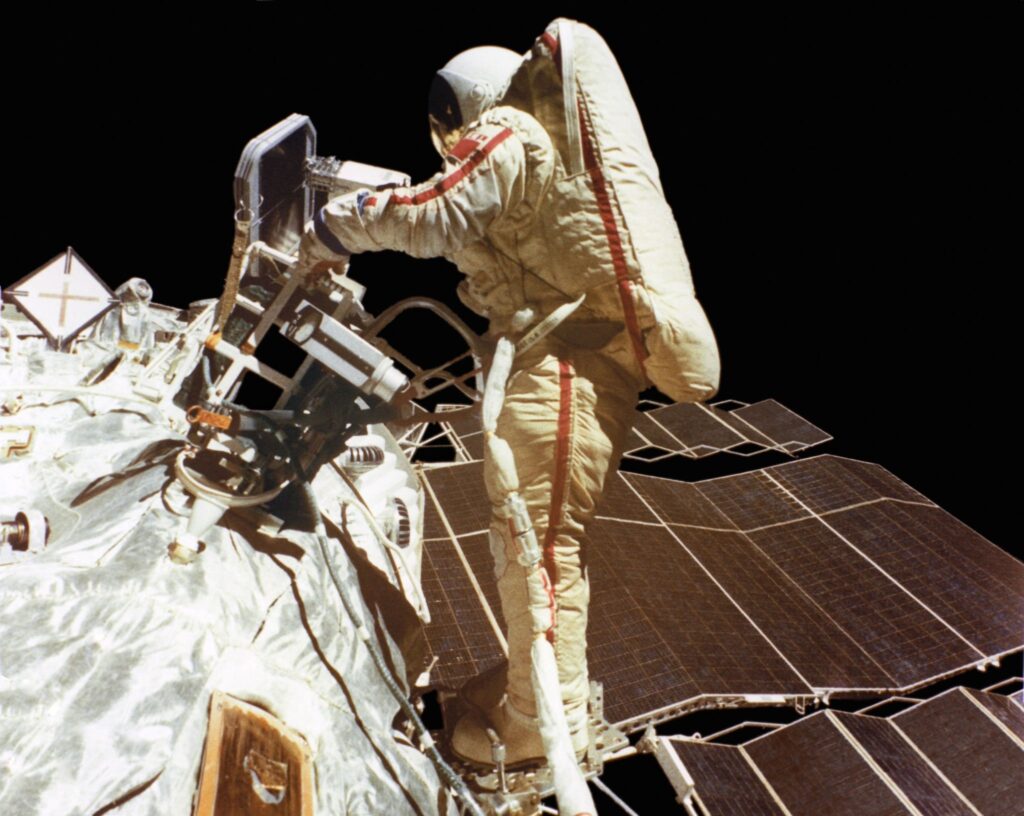This article was first published in the 181st issue of The Universe Space Tech magazine. The author is Olga Isaieva, PhD in History, historian of science and technology
At the end of November, Boris Paton celebrated his 105th birthday. Commemorating this event, we are reminding you about the contribution of this outstanding Ukrainian scientist to the space industry.
The Pioneer of welding
The process of combining components of various mechanisms plays a special role in the development of modern technologies. Welding is rightly considered the most common tool of modern engineering, so it is not surprising that scientists are showing increased interest in improving its methods. Our compatriots at the Institute of Electric Welding in Kyiv have carried out significant research in this area. The culmination of the work of scientists under the direct supervision of Borys Paton was the welding in space in 1969.

Paton’s records
Borys Paton made an invaluable contribution to the development of world science and technology, having authored more than 1000 scientific publications and made more than 400 inventions and discoveries. His research interests centered around the search for different welding methods. Having space ambitions (no exaggeration!), the scientist brought complex electric welding processes to full robotization. Borys Paton was once known as a reformer of the Ukrainian Academy of Sciences, emphasizing the fundamental path of scientific research in connection with global industrialization. The scientist is rightly considered a world record holder, having set three records by 2017. In addition, he became the oldest president of the National Academy of Sciences in the world and held this position for the longest time. By the way, his birthday coincides with the date of the Academy’s foundation — November 27, 1918.

Paton family legends
Borys Paton comes from a famous noble family, probably Dutch, who have been distinguished by professionalism and conscientious service, had ranks and recognition, and were outstanding engineers, scientists, military and public figures since as early times as the epoch of Peter the Great. In conversations with journalists, the scholar did not hide the fact that his father’s godfather was Grand Duke Vyacheslav Romanov. Family traditions included strict discipline and comprehensive home and later university education. All members of the Paton family had an incredible passion for technology.

The future researcher did not hesitate in choosing his scientific interests, having inherited them from his father, a recognized authority in bridge construction, scientist, inventor, and founder of the Institute of Electric Welding in Kyiv. The years of the young scientist’s formation included a significant period of work with Yevhen Oskarovych, which allowed him to continue and improve the scientific field he had started. Thus, it was thanks to the Patons’ cooperation that Kyiv became the world capital of welding.
Paton’s “Black Sea waves”
This is how his colleagues jokingly called his ideas that came to the scientist’s mind while vacationing in the Crimea. The academician’s bold proposal to create a welding technology in space was born and carefully considered there. Moreover, it was considered a task that was ahead of its time and could not be realized due to the unsuitability of terrestrial high-temperature welding technologies for space conditions. And space needed versatility. It should be noted that at that time, Boris Paton was no longer a newcomer to space engineering; he had participated in the development of technology back when the H-1 super-heavy rocket was being created, and he worked on welding tanks so that they would never leak.
So, to accomplish this ambitious task, the scientist created the Space Technology Department, which was later considered to be super strong, literally eternal, because each of the employees underwent an extremely difficult selection process in conditions of intense work. Colleagues rightly called Paton a “true genius of management” and an outstanding leader in science. According to his employees, he always supported an interesting idea and appreciated a job well done, which was the key to a healthy creative atmosphere in a stable and well-coordinated team.

The bold tasks that the scientist set for the team required hard work, dedication, physical endurance, and psychological stability. The need to participate directly in the tests forced many colleagues to undergo advanced training under the Cosmonaut-Researcher program, which was extremely unusual for a scientist: for example, parachute training or tests in a centrifuge and barocamp. And the most physically robust scientists had serious intentions of making a space flight and personally testing the created welding machine by prior arrangement with Serhii Koroliov. However, this did not come true, and an astronaut was trained for the experiment in due time.
At the development stage, scientists led by Borys Paton had to solve the main problems of safe welding in outer space:
- the bulkiness of electrical high-temperature devices;
- the problem of molten metal spattering during welding;
- the issue of uninterrupted operation of mechanisms in a vacuum;
- difficult to predict the behavior of metals at the molecular level at high temperatures.
Several modern welding methods were chosen: electron beam, arc, plasma, contact, and cold. They were reliable and safe, they had minimal energy consumption, volume and weight, and they would work predictably in space realities.
To solve the problems during development of the methods, it was planned to create the necessary conditions for testing in the special universal welding bench that artificially created space environment:
- strength tests of the applied electrical circuits;
- work in a vacuum in a ground-based barocamp;
- simulation of solar heating conditions;
- welding by the department’s scientists on their own on board an airplane during the Kepler curve at an altitude of 6000 meters, which provided zero gravity conditions for up to 30 seconds;
- development of the welding device design in accordance with all the requirements for onboard equipment (low weight, reliability).
Interestingly, even the intermediate results of the joint research by Sergiy Korolyov and Borys Paton on the introduction of welding technologies in space were not classified and were even regularly reported at international conferences, arousing great interest among the global scientific community.
Volcanic flight
So, at the end of 1968, after six years of preparatory work, they were ready to perform an unprecedented welding operation in space called Vulcan. Later, in October 1969, it was factually carried out during the flight of the Soyuz-6 spacecraft. It was not without incident. According to Valerii Kubasov’s recollections, Vulcan’s electron beam unexpectedly cut through a welding device and reached the hull of the ship itself, leaving a melted mark. The astronauts reported the incident and were forced to complete the mission in compliance with enhanced safety regulations. Nevertheless, the experiment was recognized as a success. The institute’s scientists determined that in space conditions, the most promising welding technology was electron beam heating. Most of the systems and mechanisms of the Vulcan device worked flawlessly, which proved that all the design decisions of the Borys Paton team were correct.

Subsequently, the study of welding in space became a large-scale program in the field of space technology, materials science, astrophysics, which was adopted by leading space countries — the United States, Canada, Japan and others.
From space to microsurgery
At a very advanced age, Borys Paton continued to generate scientific ideas that eventually came to fruition. It was on the scientist’s initiative that in 1993, experiments began on the use of a unique technology for electric welding of living tissues, which was later successfully used in surgery. It did not require suture materials and significantly reduced the time of surgery, patient blood loss and wound healing time. Currently, the method of electric welding of living tissue is being effectively tested on submarines and in space zero gravity. By the way, the creation of the new medical technology was prompted by Borys Paton’s injury, inflicted while enjoying his favorite water sport.

Paton’s space predictions
At the threshold of the twenty-first century, Borys Paton began to think about the future of humanity and the fate of science and technology. He foresaw the rapid development of research into the evolution of life on the planet, space exploration, space biotechnology, the development of new types of energy, and the extraction of extraterrestrial resources. According to the scientist, scientific and technological progress will help ensure the settlement of the nearest planets, while fundamentally changing the conditions and methods of human labor.
Borys Paton spoke with enthusiasm about the exciting challenges that future engineers will face. He also predicted changes in Ukraine after the COVID-19 pandemic, pointing out that this experience will allow Ukrainians to understand and really assess both global threats and our own opportunities to transform the world, to understand our advantages, and ultimately to find the shortest path to progress, to learn how to rationally use abundant natural resources and human potential.

